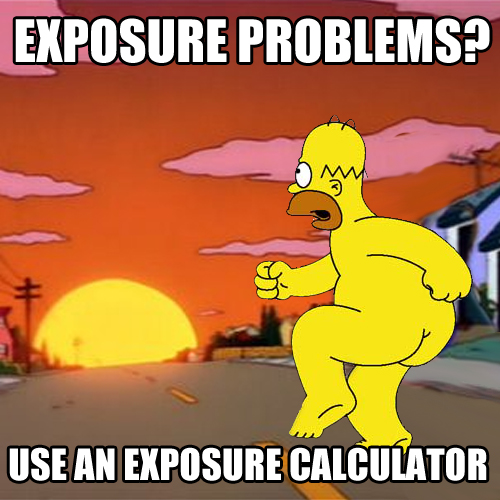First, there is no hard and fast rule for exposure times. Your time will vary. Each of us coats our screens with more or less
emulsion,
the age of our exposure bulb, the wattage of our unit, and the mesh we
use can all impact exposure time. So, the trick is to find the best time
for your particular shop.
We need a good point to start when determining the best time to expose screens. Let’s use
dual cure emulsion as starting point. If you use fast exposing pure photopolymer emulsion, take these numbers as a percentage guideline, based on your particular exposure unit.
- Sunlight exposure – 30 seconds
- 5000 watt metal halide – 1 minute
- 1000 watt mercury vapor – 4 minutes
- 1000 watt quartz halogen – 5 minutes
- Unfiltered blacklights or grow lights – 5 minutes
Again,
these are only starting points to give you an idea of where to begin
your testing. An
exposure calculator is your best bet to zero in on the
best time.
Exposure Calculator
An exposure calculator is a film positive that comes printed with five or
more identical images including fine lines and dots.
Using our starting
point exposure times above, we expose the film onto a screen and wash
out as normal. After the screen is washed out completely, hold it up to a
light and compare the different images. The one that is exposed the
best, where the image looks the most crisp, is our target. A formula
under that image will tell us our ideal exposure time.
Best Target Number X Test Exposure Time = Correct Exposure Time
Our actual exposure time multiplied by the number given under our ideal image will equal our best exposure time.

Step Wedge
Another
less exacting method to test for exposure time is to do a step wedge
test. Basically, you choose an exposure time you think will work for
you. Let’s take three minutes as an example. Place a film positive on
your screen, and then block most of the image with thin cardboard or
construction paper (something that will totally block the light) leaving
about 20% of the image showing.
Expose
the screen for less time than our three minute guess. Let’s try two
minutes. After two minutes of exposure, move the cardboard sheet down to
reveal 20% more of the image and expose for another 30 seconds. Then,
move the cardboard down the image and expose for another 30 seconds.
This will be our three minute estimated exposure time. Move the
cardboard two more times exposing 30 seconds each time. We have now
tested our exposure for a window of two minutes to four minutes in 30
second increments. Wash out the screen and see which exposure washed out
best with clean crisp edges. Your ideal time will be the least exposure
time with the best washout of the image.
Video of Step Wedge - courtesy of Chromaline
Videos on Using an Exposure Calculator - courtesy of Chromaline